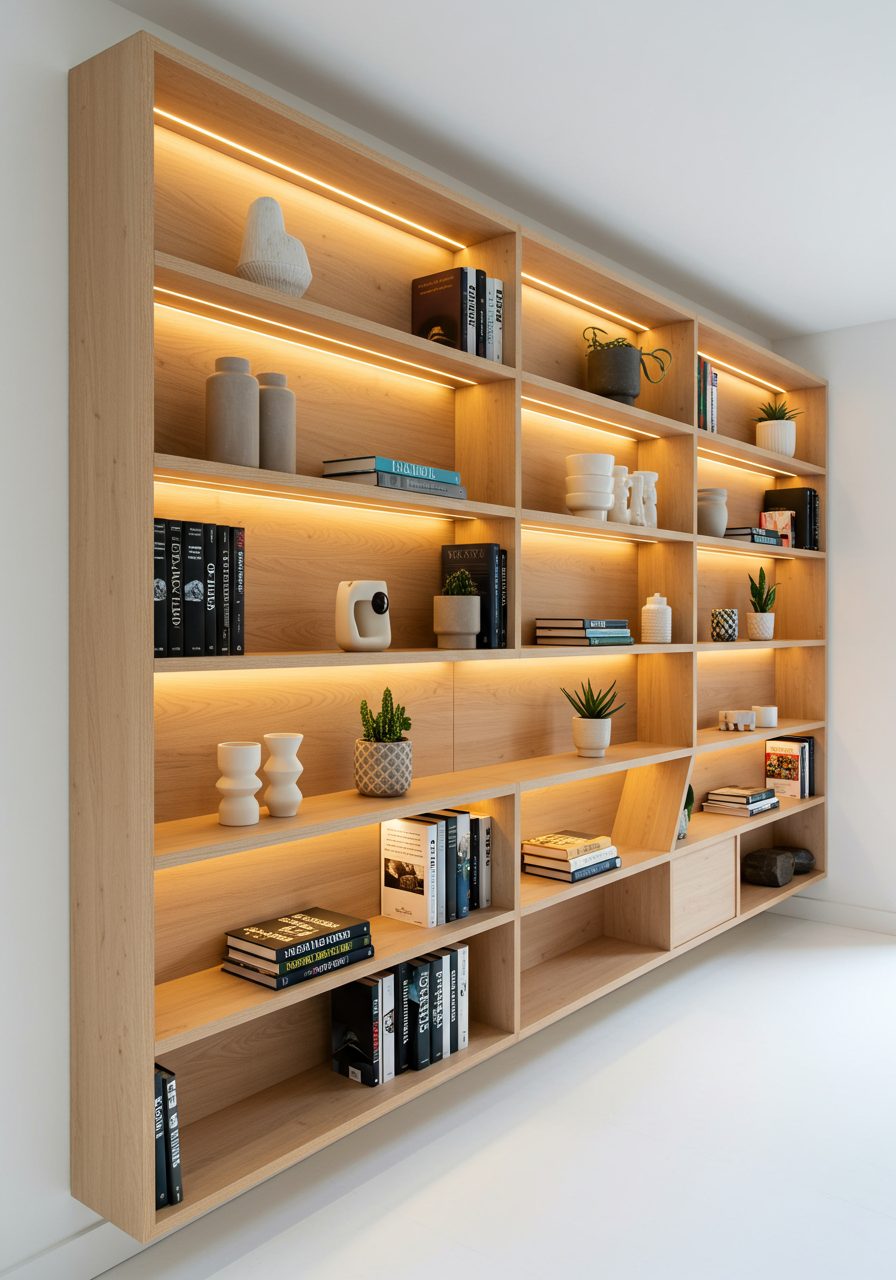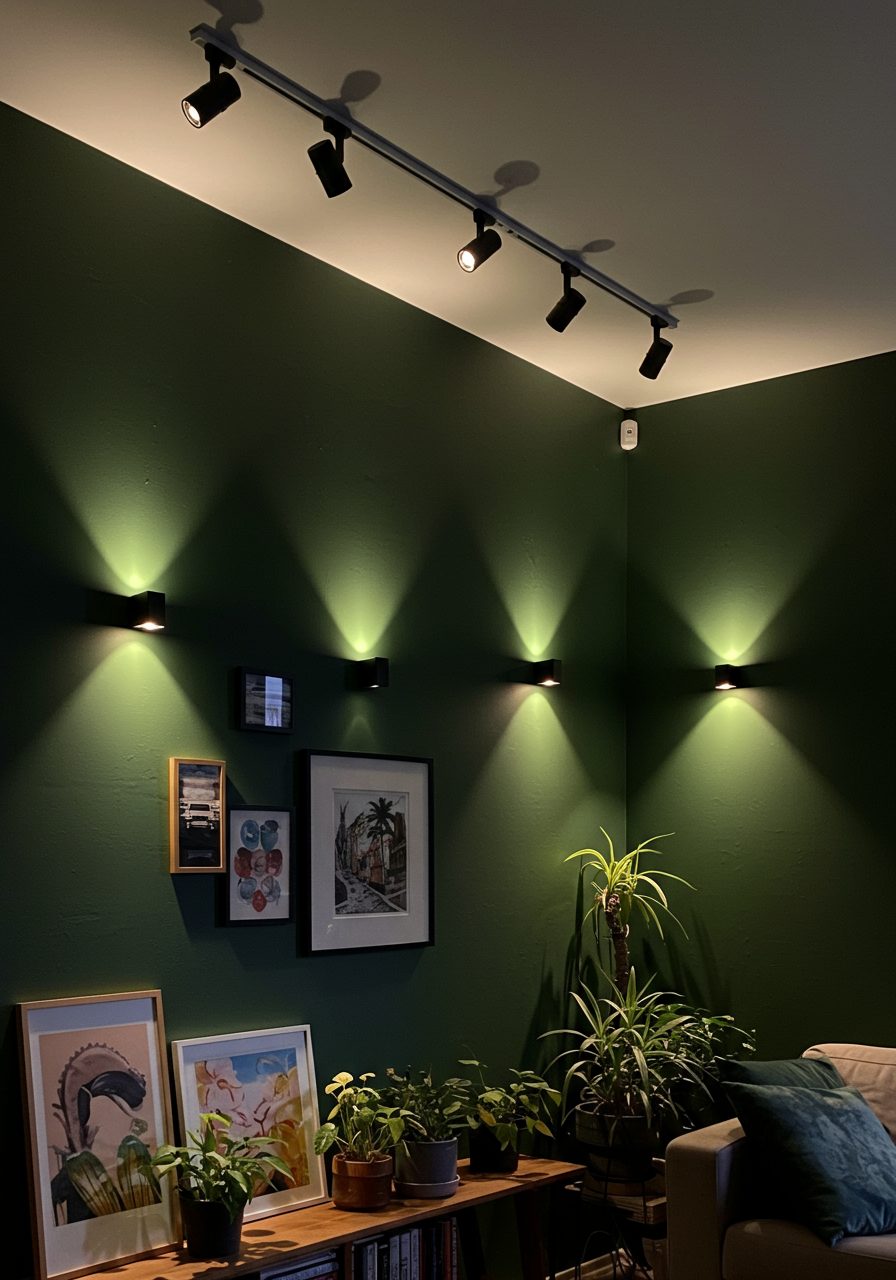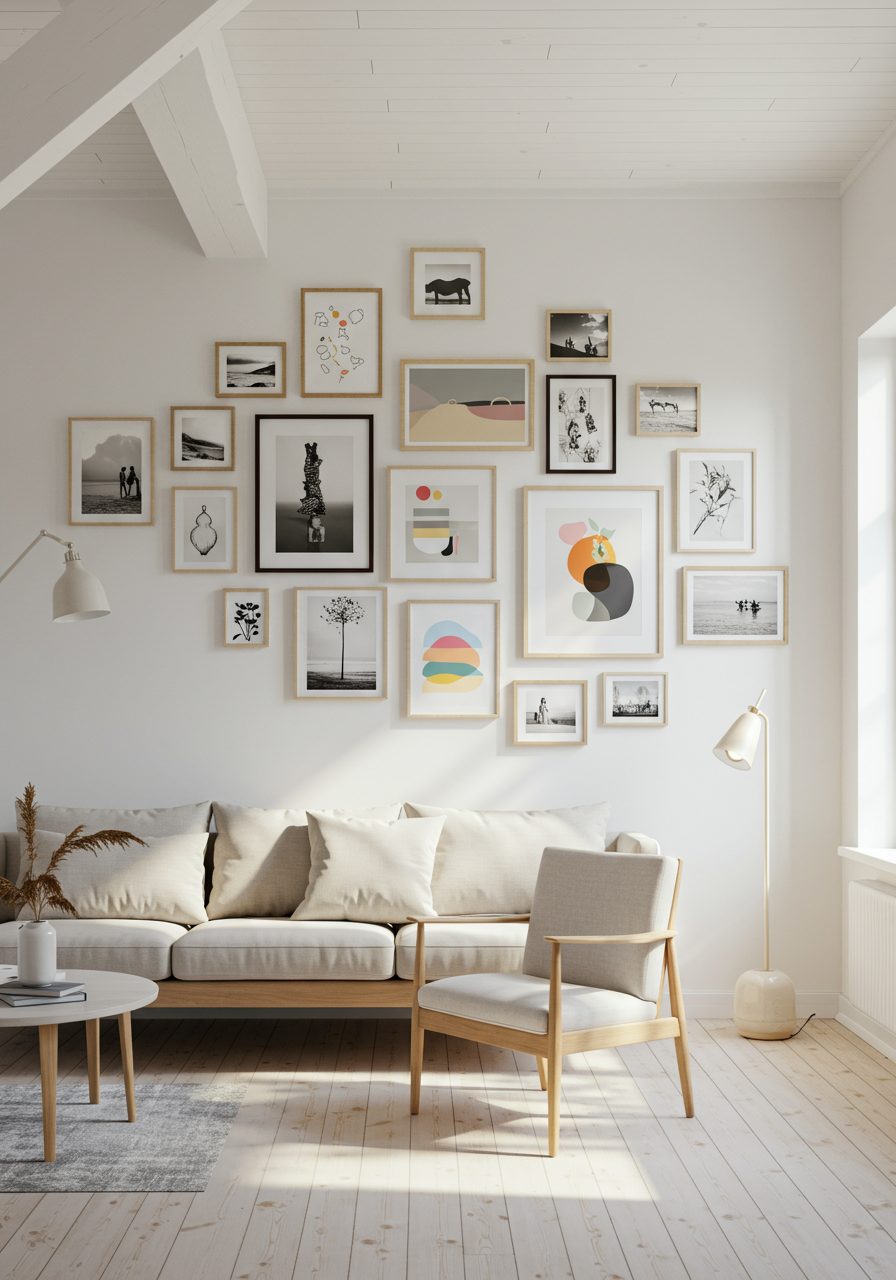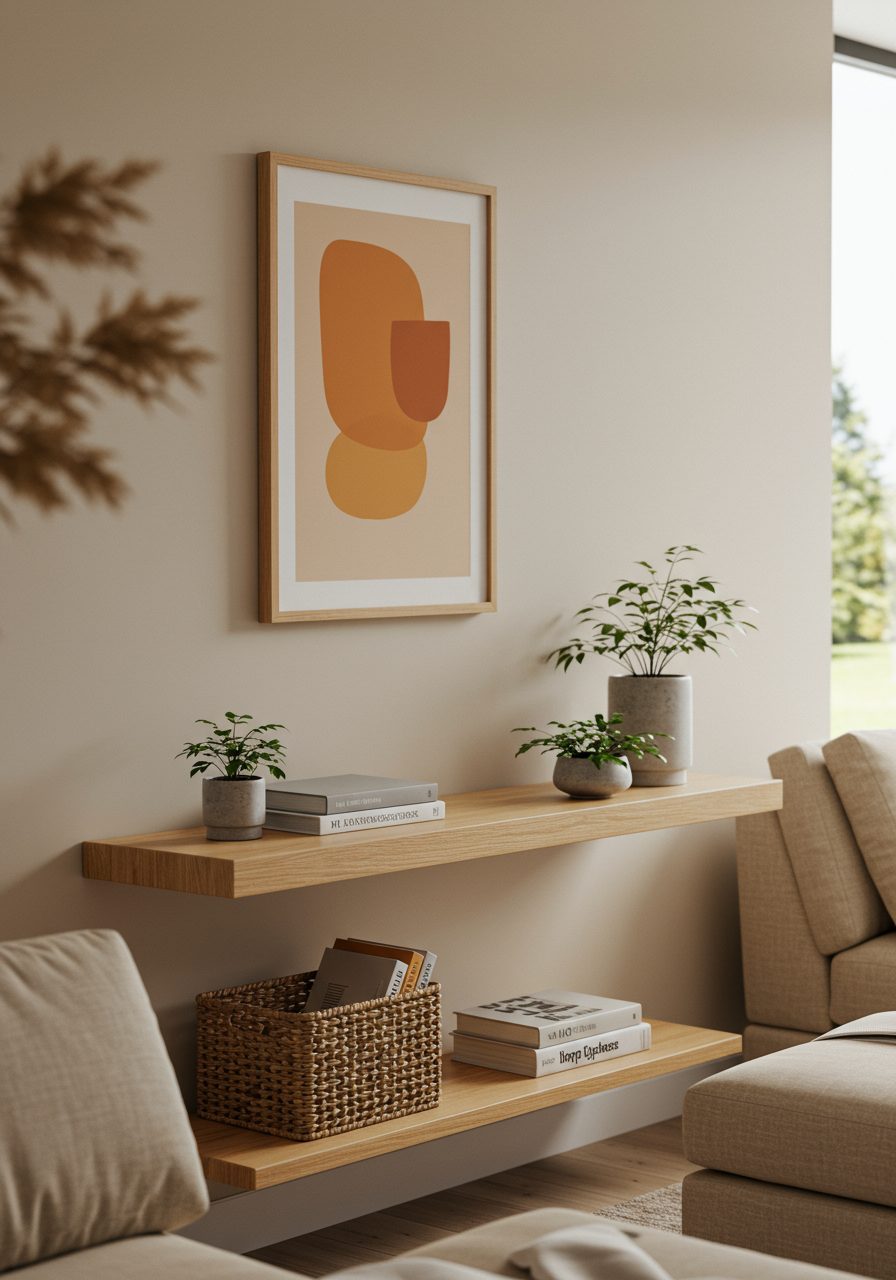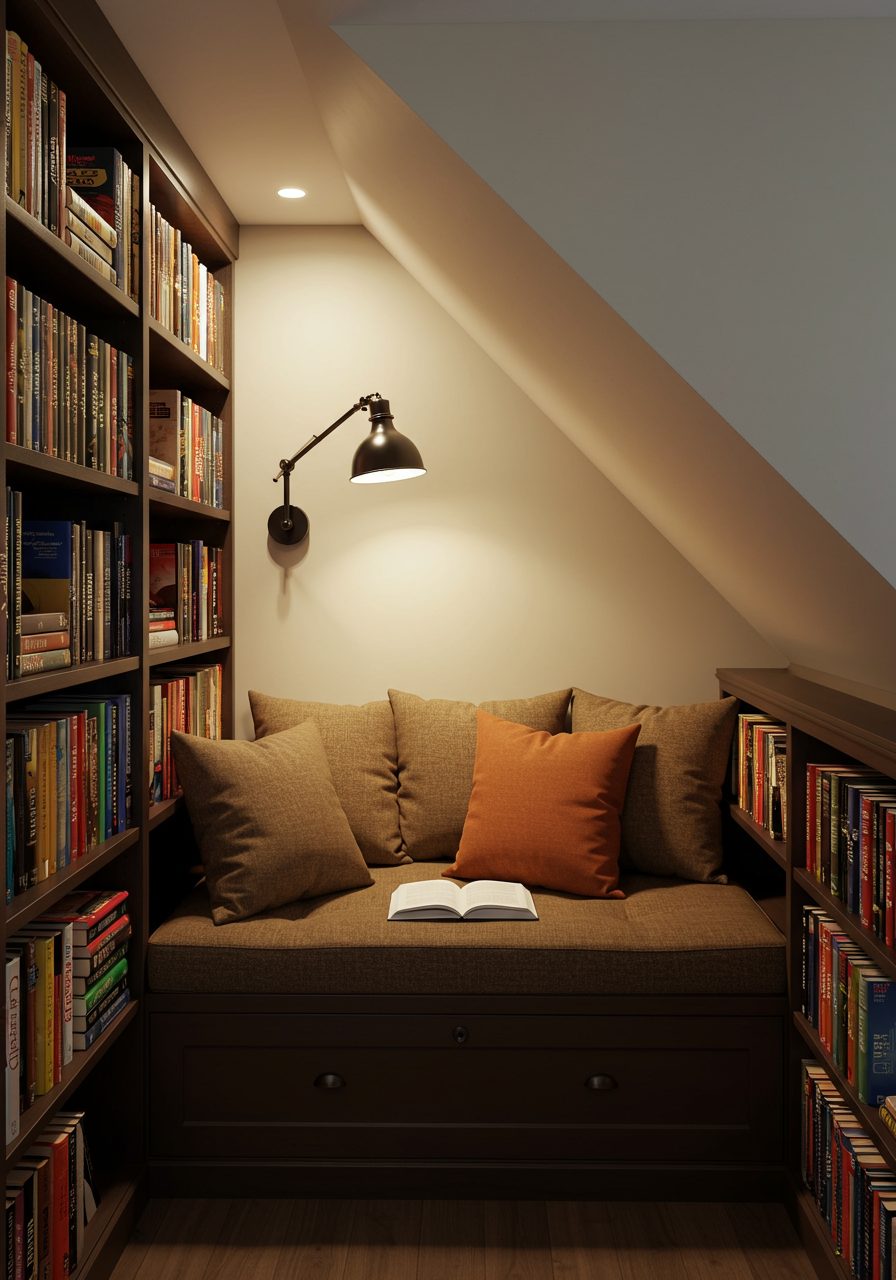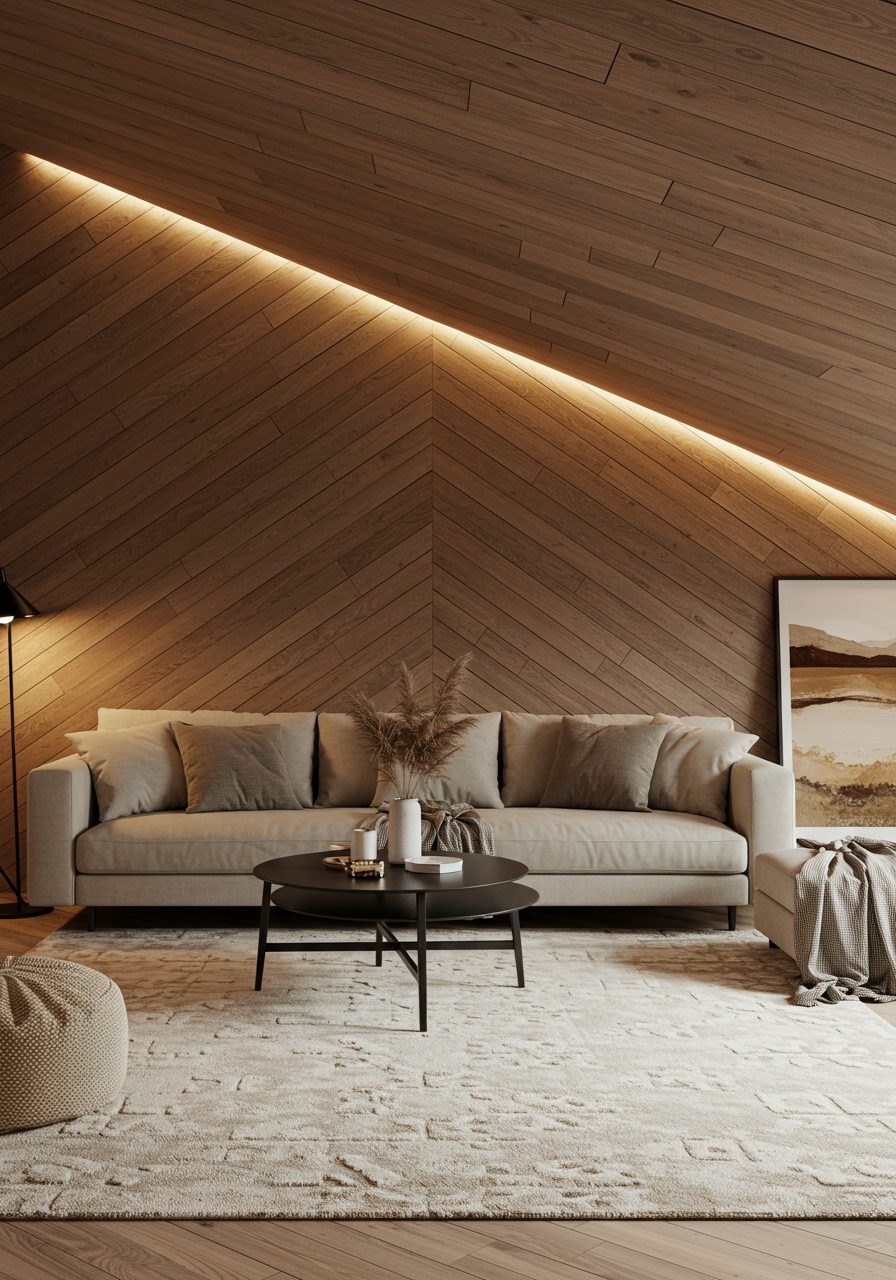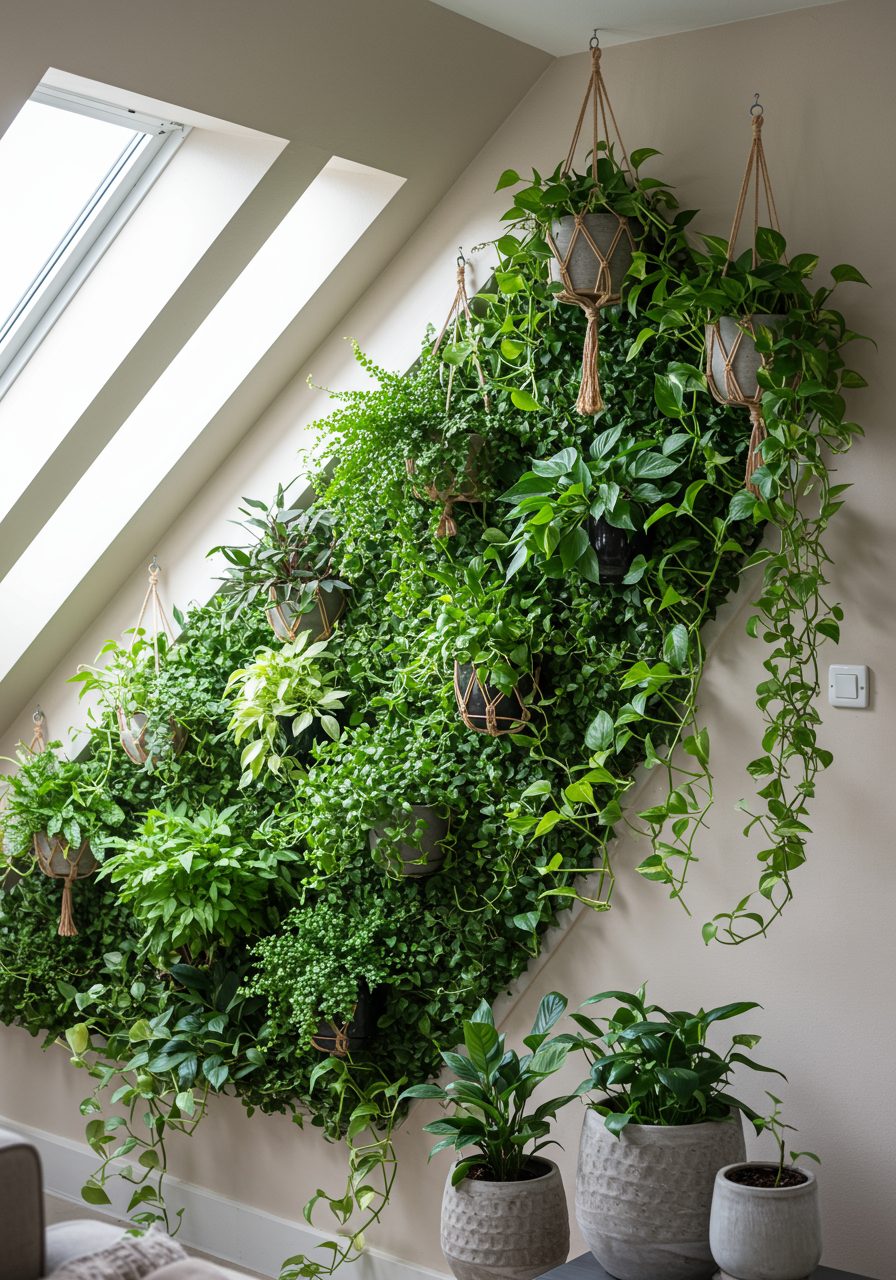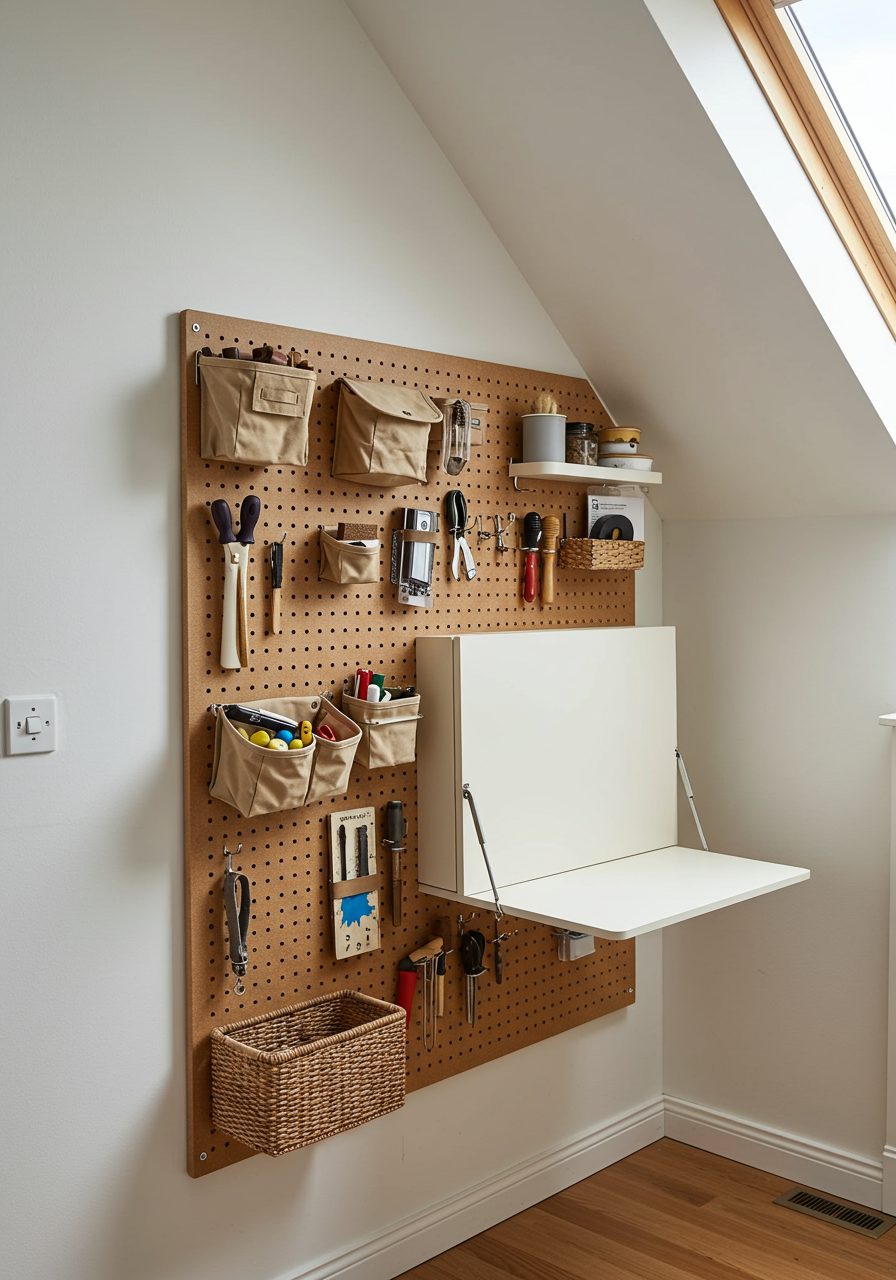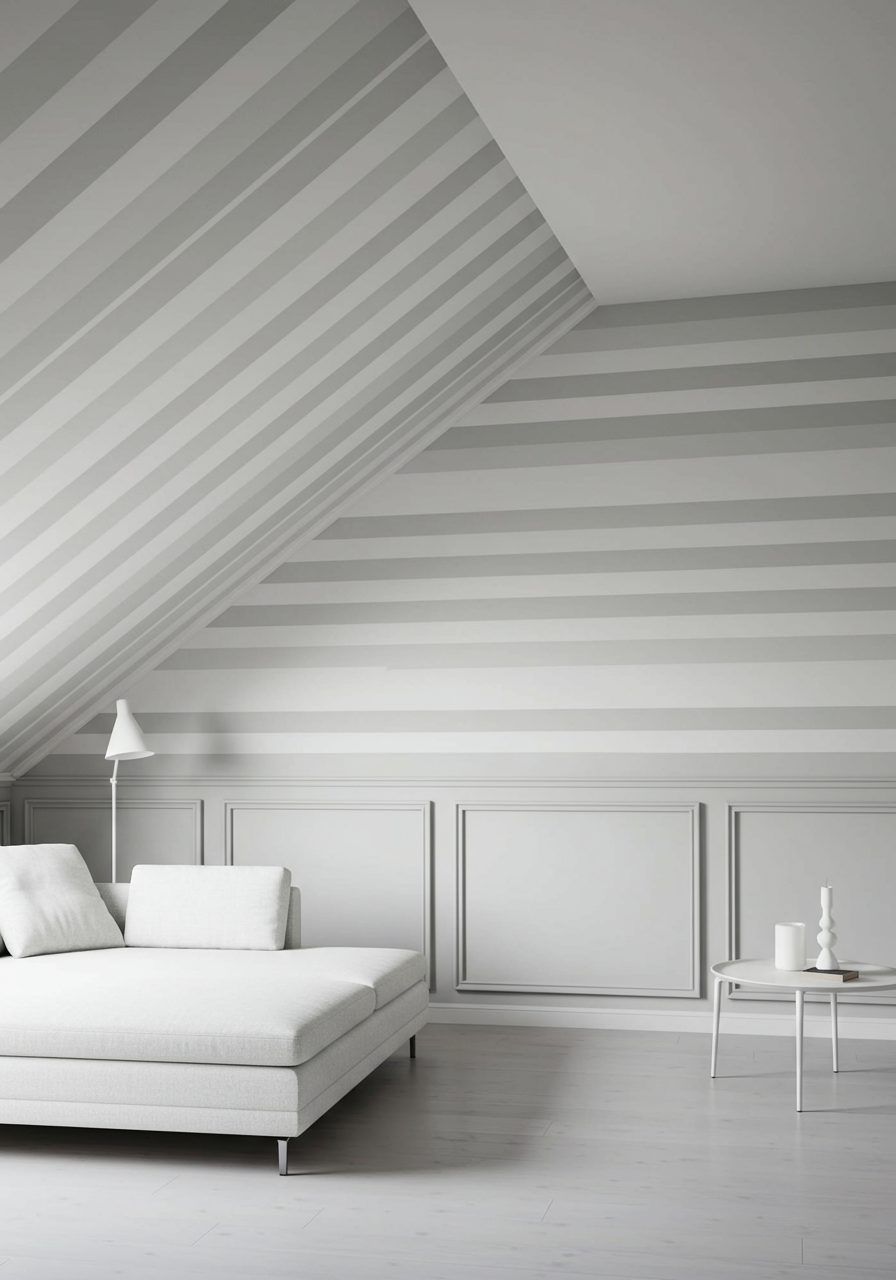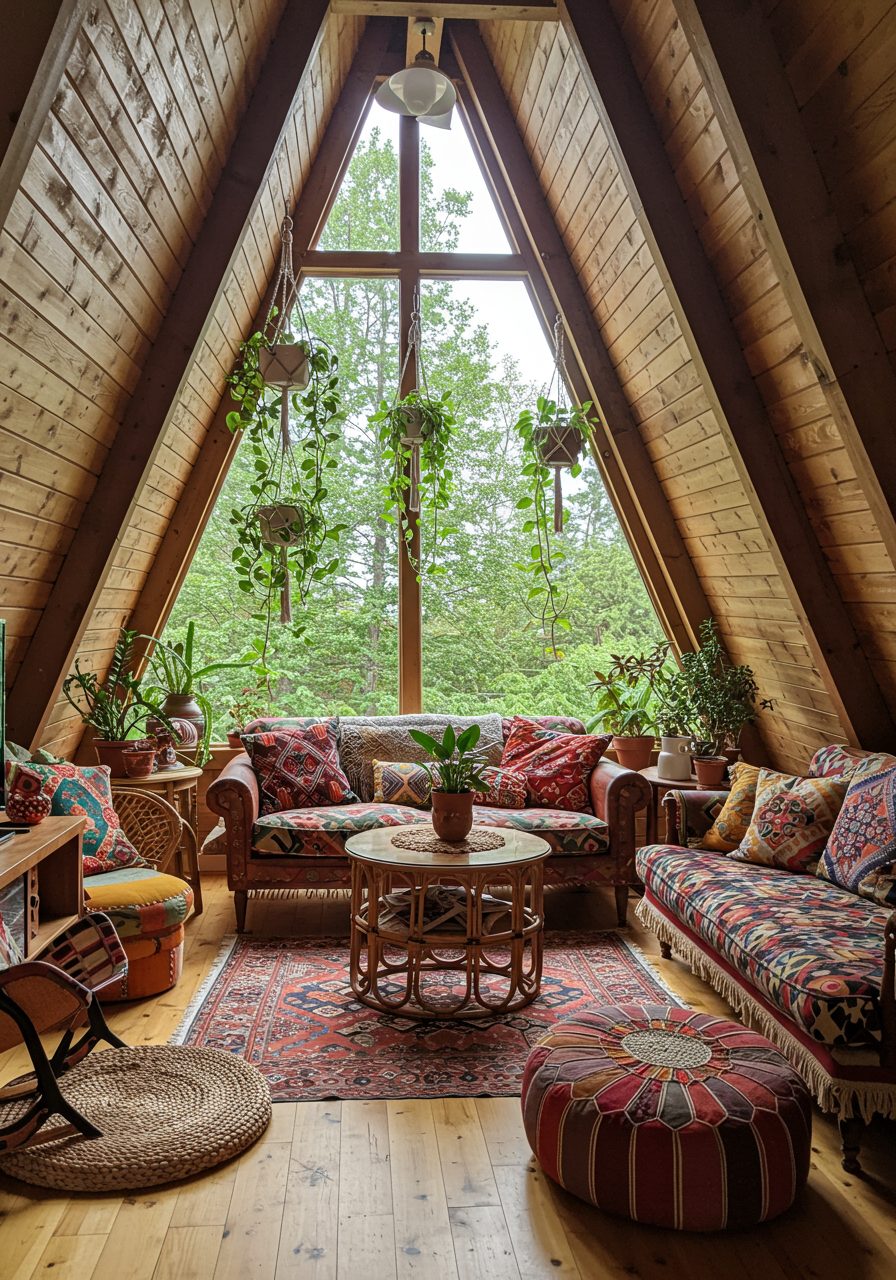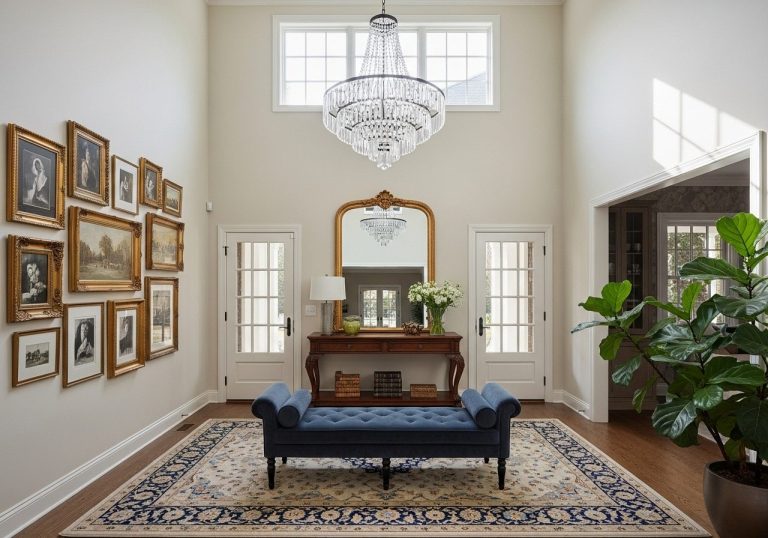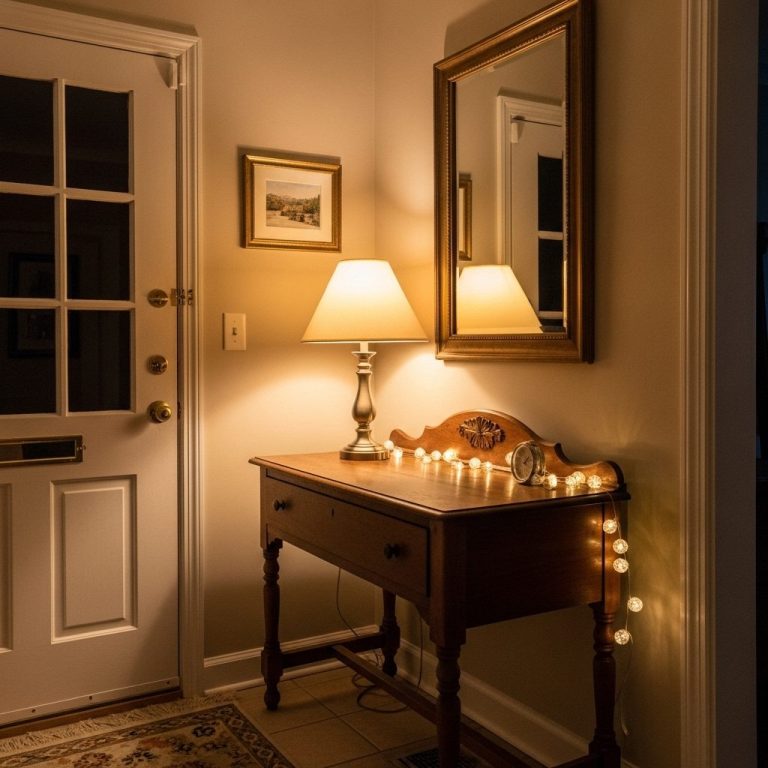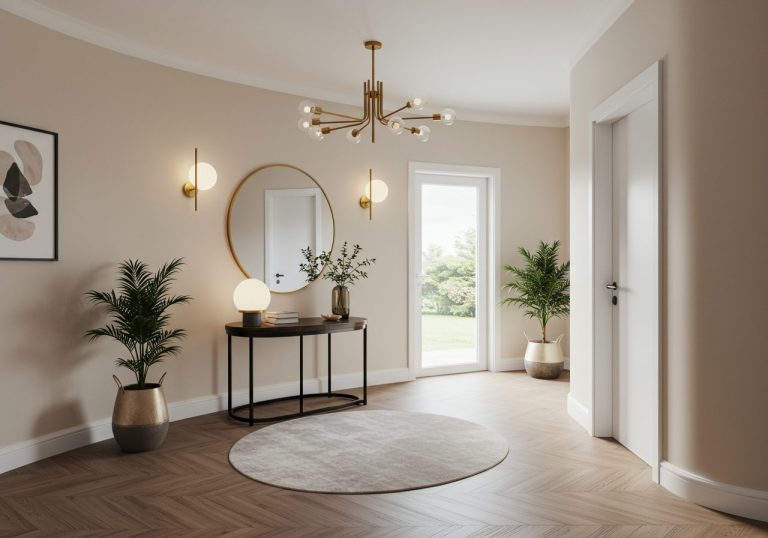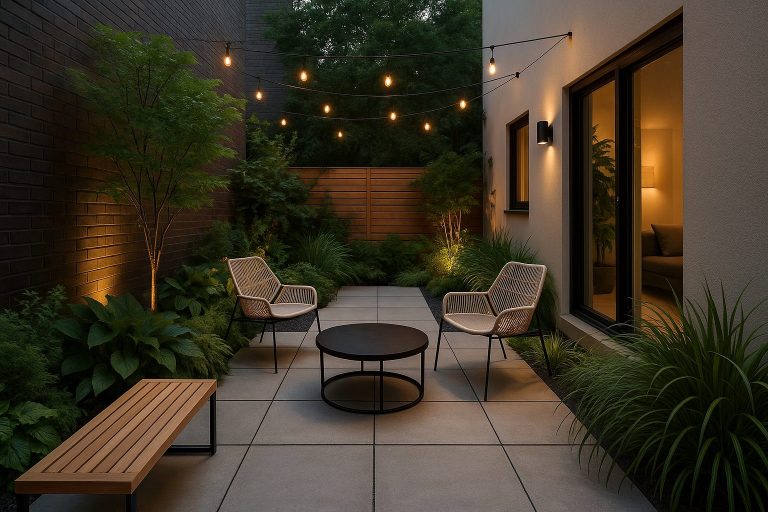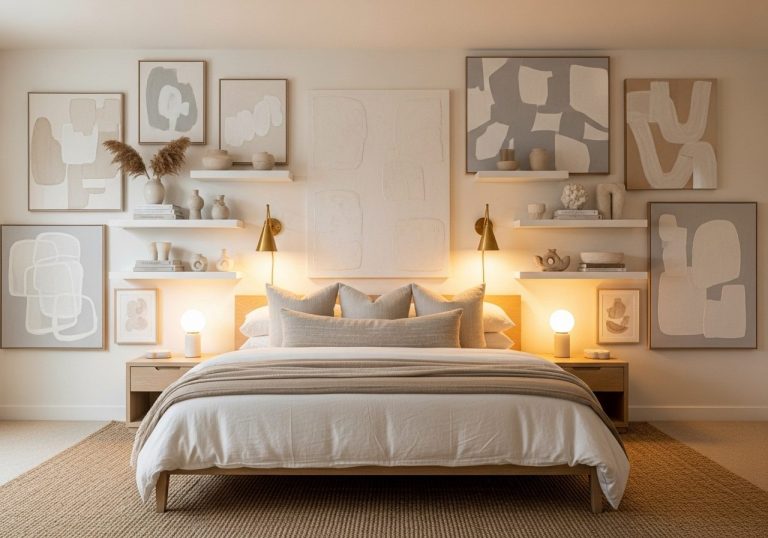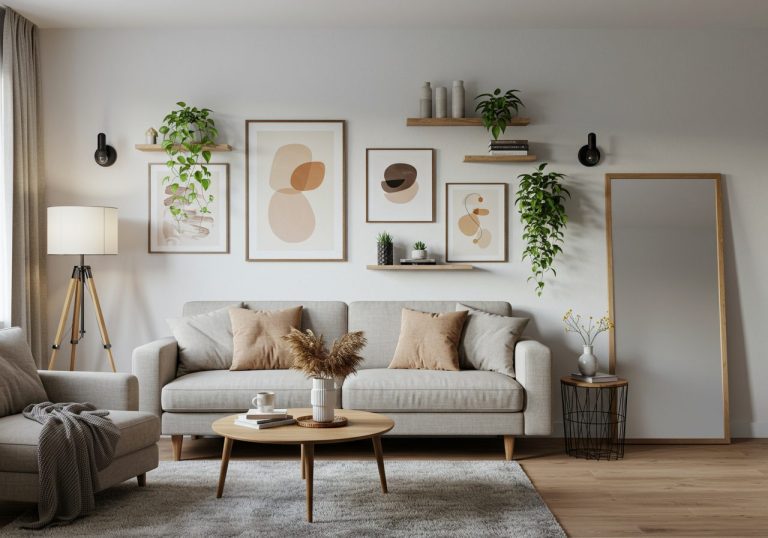How to Decorate an Angled Wall in Living Room Without Making It Look Weird

Table of Contents
- 1. Maximize Visual Impact with Paint and Wallpaper
- 1.1. Use color blocking to enhance angles
- 1.2. Try bold wallpaper patterns for dynamic dimension
- 2. Incorporate Custom Shelving Solutions
- 2.1. Floating shelves that follow the slant
- 2.2. Diagonal bookshelf design for symmetry
- 3. Highlight with Lighting Features
- 3.1. Track lighting or LED strips for architectural lines
- 3.2. Accent lights to turn slope into focal point
- 4. Showcase Art in Creative Ways
- 4.1. Gallery wall with varied frame alignment
- 4.2. Use tall vertical art to balance the angle
- 5. Add Mirrors to Create Illusion of Space
- 5.1. Angled mirrors to match the slant
- 5.2. Reflect natural light to brighten the area
- 6. Use Furniture Placement to Balance the Wall
- 6.1. Anchor with low-profile seating or storage
- 6.2. Floating console or angled sideboard placement
- 7. Embrace the Angle with Built-Ins or Nooks
- 7.1. Add a reading nook under a sloped wall
- 7.2. Design custom cabinetry that fits perfectly
- 8. Layer Textures and Materials for Depth
- 8.1. Use wood paneling or textured tiles
- 8.2. Combine fabric hangings and 3D wall art
- 9. Bring in Plants and Greenery
- 9.1. Use trailing plants to follow the line
- 9.2. Install hanging planters or corner plant stands
- 10. Use the Wall for Practical Storage
- 10.1. Hooks, hangers, and pegs on the angle
- 10.2. Floating desk or foldable workspace
- 11. Visual Tricks to Soften the Slope
- 11.1. Add horizontal moldings or stripes
- 11.2. Use contrasting paint to disguise awkward shape
- 12. Design Inspiration Gallery
- 12.1. Real homes that make angles shine
- 12.2. Styles that work well with angled walls
- 13. Frequently Asked Questions
- 13.1. How do I hang pictures on an angled wall?
- 13.2. Can I mount a TV on a sloped wall?
- 13.3. What kind of lighting works best for slanted walls?
- 13.4. What furniture looks good under a sloped wall?
- 13.5. Should I paint the angled wall a different color?
- 13.6. How do I decorate a small living room with angled walls?
- 14. Turn Your Angled Wall into a Stunning Focal Point
Tired of ignoring that awkward angled wall in your living room? You're not alone. These tricky architectural features often get wasted — but with the right strategy, they can become your favorite design element.
Key Takeaways
- Use paint or wallpaper to emphasize the shape instead of hiding it
- Custom shelving turns sloped walls into functional space
- Lighting highlights geometry and adds visual balance
- Creative art placement draws the eye strategically
- Furniture layout helps ground and frame the angled wall
- Mirrors brighten and visually expand tight spaces
Maximize Visual Impact with Paint and Wallpaper
Use color blocking to enhance angles
Angled walls can be hard to disguise — so don’t. Instead, emphasize the shape with bold color-blocking strategies:
- Paint one side in a contrasting bold tone
- Use darker shades near the floor to ground the space
- Follow the slope with crisp diagonal lines
This technique turns a visual challenge into an intentional design choice.
Try bold wallpaper patterns for dynamic dimension
Wallpaper is especially effective for angled walls. Ideal options include:
- Abstract geometric prints
- Large-scale botanicals
- Metallic or textured finishes
For best effect, consider wrapping wallpaper across both wall and ceiling to create visual flow.
Incorporate Custom Shelving Solutions
Floating shelves that follow the slant
Install floating shelves that mimic the angle of the wall. Benefits include:
- Displaying books, small art, or collectibles
- Creating depth and dimension
- Making use of awkward vertical gaps
Opt for wall-colored brackets or concealed supports to keep the look seamless.
Diagonal bookshelf design for symmetry
Custom angled bookshelves are ideal for sloped walls. They offer:
- Architectural balance
- Smart use of irregular space
- A tailored, built-in look
| Feature | Floating Shelves | Diagonal Bookshelf |
|---|---|---|
| Easy installation | Yes | No (requires custom work) |
| Ideal for small items | Yes | Yes |
| Matches wall geometry | Yes | Yes |
Highlight with Lighting Features
Track lighting or LED strips for architectural lines
Lighting can turn a slanted wall into a design highlight. Options include:
- Slim track lighting that runs along the slope
- LED light strips for subtle, modern ambiance
- Directional spotlights to emphasize artwork or textures
Lighting not only brightens the room but also enhances the wall’s angles.
Accent lights to turn slope into focal point
Use lighting to draw attention to the wall rather than away from it. Try:
- Wall-mounted sconces at key points
- Pendant lights that echo the slope
- Recessed uplighting or downlighting
According to Houzz, well-placed ambient and accent lighting can significantly increase spatial perception in small or awkwardly shaped rooms.
Showcase Art in Creative Ways
Gallery wall with varied frame alignment
Traditional picture hanging rules don’t apply here. Use the angle to your advantage:
- Arrange frames along the slope
- Mix frame sizes for dynamic energy
- Stick to a limited color palette for cohesion
Mounting with command strips or adhesive hooks gives you flexibility to adjust layout without damage.
Use tall vertical art to balance the angle
Vertical artwork adds height and helps rebalance a descending slope. Choose:
- Oversized line drawings
- Vertical abstract canvases
- Narrow fabric or woven wall hangings
| Art Style | Recommended for Angled Wall | Effect on Room |
|---|---|---|
| Horizontal pieces | No | Exaggerates slope |
| Vertical pieces | Yes | Balances height visually |
| Mixed gallery layout | Yes | Adds rhythm and movement |
Add Mirrors to Create Illusion of Space
Angled mirrors to match the slant
Mirrors can be cut or chosen to follow the architectural line of the wall:
- Custom frameless mirrors
- Geometric mirror groupings
- Slanted-edge mirrors
They reflect light and expand tight spaces visually.
Reflect natural light to brighten the area
Place mirrors strategically to bounce daylight into shadowy areas. Try:
- Across from a window or glass door
- Near floor level to expand perceived ceiling height
- Adjacent to light sources for added reflection
| Mirror Placement | Effect | Best Use Case |
|---|---|---|
| Across from window | Reflects natural light | Brightens darker walls |
| On angled surface | Echoes geometry | Enhances architectural feel |
| Near low furniture | Extends vertical perception | Great for low-profile rooms |
Use Furniture Placement to Balance the Wall
Anchor with low-profile seating or storage
Placing furniture near an angled wall requires intentional sizing. Use:
- Low-backed sofas or loveseats
- Console tables with open bases
- Flat storage benches or ottomans
These create a visual base without overwhelming the slanted wall above.
Floating console or angled sideboard placement
Take advantage of every inch by using furniture that mirrors or contrasts the slope:
- Custom consoles that fit under the slope
- Angled cabinets or shelving units
- Wall-mounted media units for space-saving utility
| Furniture Type | Best Fit for Angled Wall | Visual Effect |
|---|---|---|
| Low-profile sofa | Yes | Grounds the room |
| Wall-mounted console | Yes | Opens up floor space |
| Angled sideboard | Custom only | Adds unique architectural detail |
Embrace the Angle with Built-Ins or Nooks
Add a reading nook under a sloped wall
An angled wall often creates a tucked-away space — perfect for a cozy reading nook:
- Add a low bench with cushions
- Incorporate built-in shelving above or beside
- Use wall-mounted sconces for soft lighting
This transforms unused space into a functional and aesthetic feature.
Design custom cabinetry that fits perfectly
Sloped walls demand custom solutions. Well-designed built-ins:
- Maximize floor-to-ceiling utility
- Follow the geometry of the wall
- Provide concealed or open storage
| Built-In Type | Ideal For Sloped Wall | Notes |
|---|---|---|
| Bench with drawers | Yes | Combines seating and storage |
| Angled cabinets | Yes (custom required) | Follows pitch precisely |
| Open shelf units | Partial fit | Better for wide-angle slopes |
Layer Textures and Materials for Depth
Use wood paneling or textured tiles
Flat painted walls can emphasize odd angles. Add texture instead:
- Vertical or diagonal wood slats
- 3D wall panels or tile mosaics
- Plaster or Venetian finishes
These create depth, drawing attention away from the wall’s irregular shape.
Combine fabric hangings and 3D wall art
Soft textures like tapestries or fiber art can soften architectural harshness:
- Hang asymmetrically to embrace the slope
- Use macrame or weavings to add vertical flow
- Mix with 3D sculptures or layered shadowboxes
| Material Type | Texture Level | Best Used On |
|---|---|---|
| Wood slats | Medium | Full wall or lower half |
| Fabric art | Soft | Middle to upper third |
| Tile or plaster | High | Accent sections |
Bring in Plants and Greenery
Use trailing plants to follow the line
Plants help visually guide the eye along the slope. Try:
- Hanging ivy or pothos that trails downward
- Wall planters that mimic the angle
- Narrow ladder plant stands tilted against the wall
Natural shapes soften geometric edges and add life to the room.
Install hanging planters or corner plant stands
Corners under an angled wall are perfect for vertical plant displays:
- Tiered stands with varying heights
- Hanging baskets that drop into the negative space
- Wall-mounted plant boxes for herbs or succulents
| Plant Type | Maintenance Level | Best Display Method |
|---|---|---|
| Pothos | Low | Hanging or trailing |
| Snake Plant | Low | Floor or shelf-mounted |
| Ferns | Medium | Hanging planters |
Use the Wall for Practical Storage
Hooks, hangers, and pegs on the angle
A functional wall can be beautiful too. Angled walls are ideal for:
- Pegboards customized to the pitch
- Wall hooks for bags, hats, or baskets
- Hanger rails for coats or blankets
This keeps clutter organized and adds visual rhythm.
Floating desk or foldable workspace
Need a compact office setup? Create a floating desk that:
- Is anchored into the sloped wall
- Can be folded away when not in use
- Includes vertical file racks or pegboards above
| Storage Element | Usefulness on Angled Wall | Visual Appeal |
|---|---|---|
| Pegboards | High | Highly customizable |
| Hooks + rails | Moderate to high | Functional minimalism |
| Foldable desks | Very high | Best for tight corners |
Visual Tricks to Soften the Slope
Add horizontal moldings or stripes
Horizontal lines break up vertical exaggeration and reduce visual tension:
- Apply thin trim or panel molding
- Paint narrow horizontal stripes
- Use shiplap boards installed sideways
This creates a sense of balance across the entire room.
Use contrasting paint to disguise awkward shape
Instead of hiding the slope, redirect attention with color:
- Paint the sloped section slightly darker or lighter
- Use complementary colors for ceiling and wall
- Add a wide painted stripe along the base
These tricks reframe the angle as intentional design.
| Visual Technique | Ideal for Which Slope | Result |
|---|---|---|
| Horizontal trim | Steep or dramatic slopes | Adds symmetry |
| Contrasting paint shades | All angled types | Defines wall vs ceiling |
| Shiplap paneling | Low angled ceiling walls | Rustic or coastal vibe |
Design Inspiration Gallery
Real homes that make angles shine
Many interiors use angled walls as design features, including:
- Attic lofts turned into bright living spaces
- A-frame homes with full-width accent walls
- Modern apartments using track lighting across the slope
In these examples, the angle isn’t disguised — it’s emphasized.
Styles that work well with angled walls
Some styles naturally accommodate asymmetry better than others:
- Scandinavian – Clean lines, minimal furniture, natural textures
- Bohemian – Rich layers, tapestries, hanging plants
- Minimalist modern – Emphasis on form and negative space
Each can make the angle a feature rather than a flaw.
Frequently Asked Questions
How do I hang pictures on an angled wall?
Use removable adhesive hooks or command strips. Consider creating a gallery layout that follows the slope rather than fighting it.
Can I mount a TV on a sloped wall?
It’s not recommended unless you build a floating panel that adjusts for the angle. A better option is placing the TV on a console below.
What kind of lighting works best for slanted walls?
Track lighting, recessed lights, and angled sconces work well. Use them to accentuate or soften the slope, depending on your design goals.
What furniture looks good under a sloped wall?
Low-profile furniture such as benches, media consoles, or storage cabinets. Avoid tall shelves unless they’re built-in to fit the slope.
Should I paint the angled wall a different color?
Yes — painting it a slightly darker or lighter shade than the adjacent wall can help define the angle while adding dimension.
How do I decorate a small living room with angled walls?
Stick to neutral tones, maximize natural light with mirrors, and use vertical storage. Avoid bulky furniture and embrace custom-fit solutions.
Turn Your Angled Wall into a Stunning Focal Point
Decorating an angled wall in the living room may seem challenging at first, but it's also an opportunity to introduce architectural interest, personalized style, and functional use into your space. Whether you highlight the slope with bold color blocking, install custom shelves to follow its pitch, or use lighting and mirrors to play with depth and brightness — each strategy turns a design quirk into a feature.
Here’s what matters most:
- Embrace the angle instead of fighting it — with art, lighting, and built-ins that complement the wall's geometry
- Balance the room visually — through smart furniture placement and texture layering
- Make it practical — by using custom solutions like fold-out desks or pegboards to maximize storage
With the right mix of creativity and planning, your angled wall can become one of the most admired elements of your living room — not an eyesore, but a signature.


